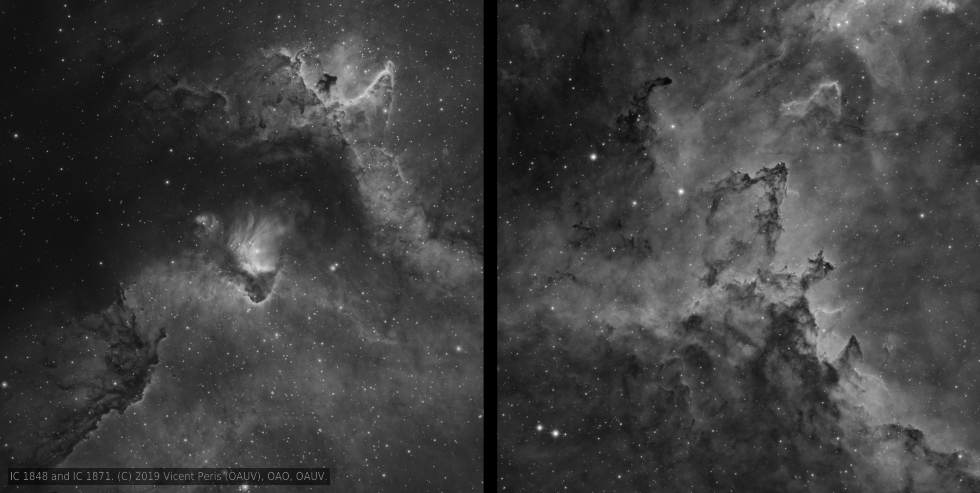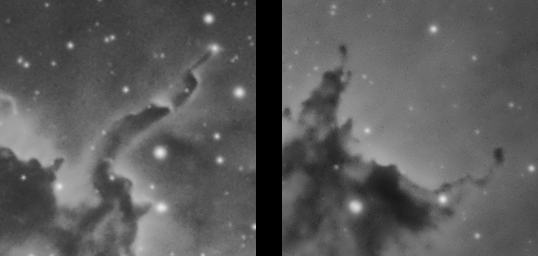Heart and Soul in Cassiopeia
In this shocking frames emotion blends with reason, heart blends with soul, since the showcased images correspond to two fragments of the Heart and Soul nebulae, two emission nebulae in the Cassiopeia constellation where active star formation is taking place. Both regions are part of the same stellar association known as Cassiopeia OB6, located inside the Perseus arm of our Galaxy.
Just as in other active star forming regions like the Orion or Carina nebulae, in these areas we find enormous cavities being carved by radiation pressure and stellar winds coming from the massive stars within. The young stars that push and squeeze the gas dig these pits, and simultaneously create another trait seen in this composition: the disturbing finger-shaped dark nebulae. These structures are dense clouds of dust outlined by shining gas ridges where new stars are forming, excellent examples of chain star formation as highlighted in the zoomed crops below:
These areas constitute one of the best evidences of the theory stating that star formation is triggered by the stars themselves, since the age of the stars inside the nebula decreases with the distance to the center of the cavities. Studying the Hertzsprung-Russell diagrams of several star clusters inside the Heart and Soul nebulae has allowed to measure their distance from Earth to be 7,000 light years.
The two selected frames in this composition have the same field of view, and are centered on selected areas IC 1871 (left) and IC 1848 (right). Total exposure times of 26 and 18 hours, respectively, were compiled through an H-alpha filter using the 20″ telescope located at the Observatorio de Aras de los Olmos, the observing station of the Observatori Astronòmic de la Universitat de València. The image acquisition and processing has been made by Vicent Peris, astrophotographer of the Observatori, using the PixInsight software package.








